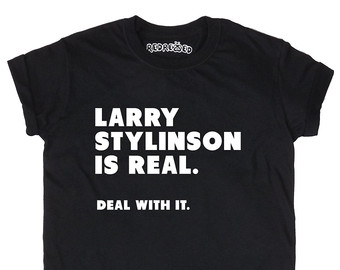Session Two: Gender and Sexuality

This represents my notes on the presentations at the 2018 International Association for the Study of Popular Romance conference. Please consider my status as an imperfect recorder of literary academia. I hope you enjoy reading about this conference as much as I enjoyed observing it. This blog uses affiliated links.
Asexual romance in an allosexual world: how asexual characters (and authors) create space for romantic love. Ellen Carter (University of Strasbourg)
Asexual romance is less physical, more mental space
1948 Kinsey Study placed between on scale from 0 (het) to 6 (homosexual) with X for no socio-sexual contacts or reactions.
1994 UK study of 18,000 people found 1% reported no sexual attraction to anyone
2001 AVEN and asexuality.org released
2004 Understanding Asexuality by A Bogaert
Asexuality is not:
- Celibacy
- A disorder
- Hormonal
- And has no physical cause
It is:
- Attraction not action
- A spectrum
Often people are seen as ‘cold’, and not necessarily accepted into the queer community.
Spectrum goes from asexual, through demi-sexual/grey sexual to allosexual.
Demi-sexual requires strong emotional bond prior to sexual attraction
Included graph of whole queer space, including pansexual, and noted people can have all different combinations
Analysis of 60 ace-spectrum novels
- 27 in 2016 was the peak, has dropped off to 12 in 2017 and 2 in 2018
- The theory is that publishers tried it in 2016 and it didn’t sell
- 33 of 60 are mm, 4 are ff, 1 fm, rest are trans/para/menage (Carter’s categories)
- Only 11 of the 60 include female characters
Discussion on general queer publishing
- referenced Girls Who Like Boys Who Like Boys: Women and Gay Male Pornography and Erotica
by Lucy Neville
- 37% of viewers of mm porn online are women
Allosexual romance includes non-aligned sexual libido which signals conflict to be resolved
Asexual romance negotiate relationship differently
- Misaligned libido is a trope with many combinations (asexual with allosexual, poly/menage, open, etc)
Back to the 60 novels:
- 53 authors
- 72% of them identified on website as female, 15% non-binary, 11% male, 2% trans (and 50% of authors identified as own voices, with the rest unspecified)
Conclusion
- Characters work together to build intimacy and understand each other
- Creating new spaces in which they can both survive
- Consent is an ongoing process
- Have yet to see a book with asexual male and allosexual female leads
Rural habitus, young love and control – young men talk about hetero-romance and living rurally in Aotearoa/New Zealand. Christina Vogels (AUT New Zealand)
Interviewed 22 young men (aged 16) about being a boyfriend and domestic violence indicators
Rural masculinity
- Love and control
- Rural areas in NZ have high levels of domestic violence compared to urban
- Old boys network is fierce and intense
- Heteronormativity
- Surveillance of partners is easier in small town/rural setting
Easy to be hegemonic masculine in this setting, eg play by the rules
Masculinity is assumed superior and society doesn’t conflate with something undesirable
Most of 22 interviewees associated male weakness with the word ‘pussy’ and used ‘bitch, slut’ for strong females.
Process – showed the 22 males Twilight, then split into 3 focus groups with questions
“How to be a good boyfriend”
- Benevolent paternalism ‘buy her flowers’
“What about breaking up?”
- Expectation is to ‘man up’ and beat up the new boyfriend to reassert masculinity
They believed being a boyfriend showed a right to possession, and physical violence to another guy was marking territory.
(Personal Note: I grew up in a small town in NZ near where Vogels lives, and this attitude was prevalent where I went to school. This talk was very close to home for me).
They fight to prevent shame – don’t want to “look like a pussy”, eg a lack of violence shows weakness
Study had clear demarcation between townie and farmer, which affects masculine status
- Farmer: natural masculinity/muscles
- Townies: need to assert this/earn it. These kids felt the pressure to go to the gym and take on an idealised male, more muscled body.
The do-ability of violence was potential impractical because of school discipline systems (Note: this is Vogels interpretation of the data, and assumes these young men want to avoid being hauled in front of the school principle, which doesn’t align to my experience of a high school where fights were normal, and domestic violence was a part of life for many students).
Being a fighter is less important than the posturing.
Next step: How to work with young men and expose the precarious nature of their code. It’s shaky.
Shipping Larry Stylinson: What makes pairing appealing boys romantic? Andrea Anne Trinidad (Ateneo de Manila University, Philippines)
From the Beatles to K-Pop, teen girls have screamed over boy bands.
One Direction – 2010-2015 – teen girls “shipped” (created) a romance between Harry Styles and Louis Tomlinson, nicknamed Larry Stylinson. It is the most re-blogged friendship on Tumbler.
WhyLarryIsReal has 219,000 followers on Twitter
Fans have created fan-fiction around the relationship, believing the band split up on purpose to keep the relationship hidden. A detailed plot has arisen, with the band’s management touted as the villain, and elaborate conspiracy theories abound in fan fiction. You can even buy the “Larry Stylinson is Real” t-shirt.
The fan fiction includes song interpretation, and fans draw strength from the adversity of love in this story.

